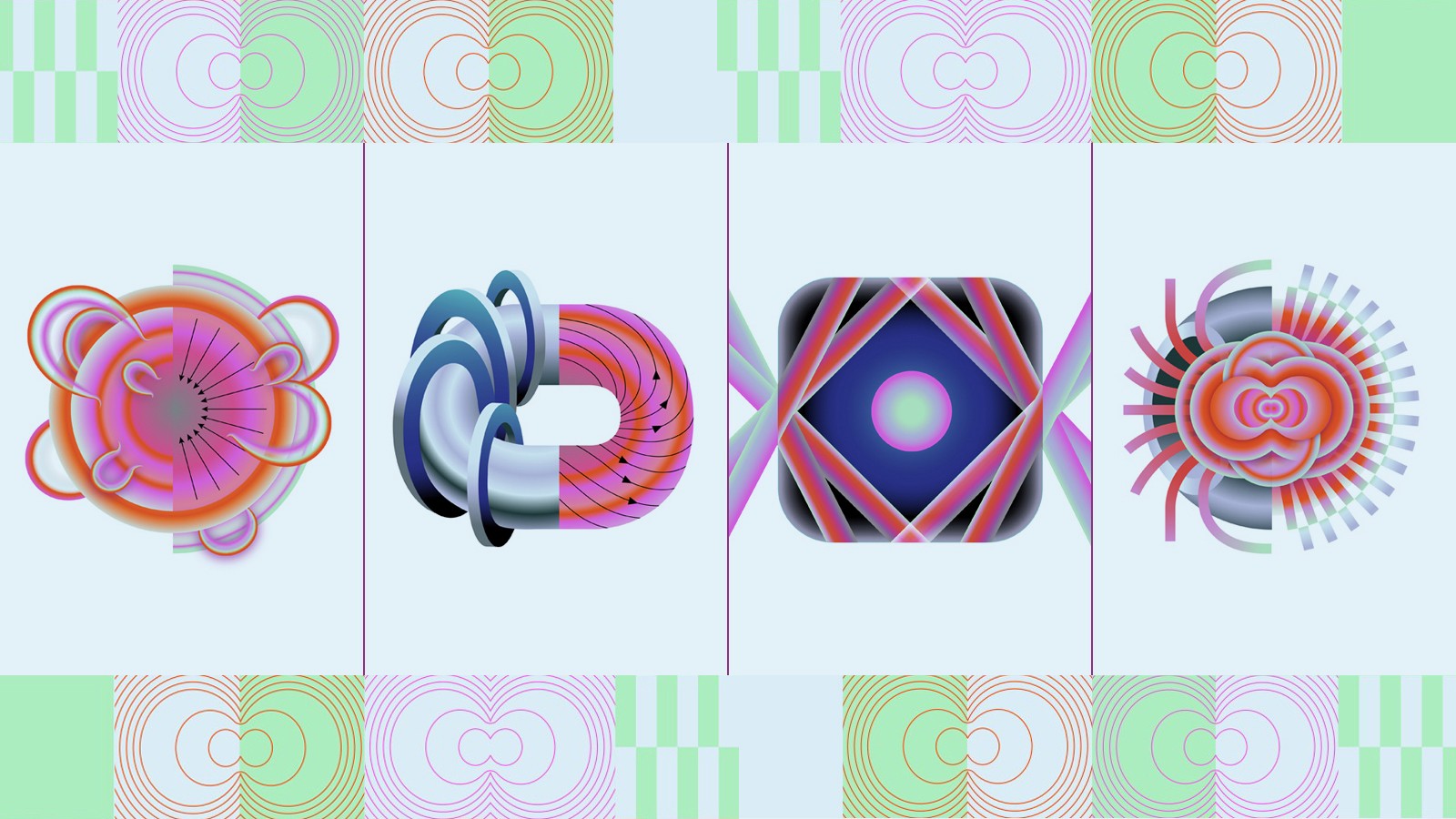
The fusion process can only occur under specific conditions. Atoms must be subjected to immense heat and pressure to overcome tremendous physical forces and fuse.
There are three methods most likely to yield sustained fusion reactions on Earth, with one beyond our reach.
Magnets
The leading global approach is confining fusion fuel with magnetic fields, called magnetic confinement fusion. In the process, fuel becomes so hot that electrons break off, and nuclei smash together to fuse. Matter at these extreme conditions is called plasma.
All sorts of devices use strong magnetic fields to shape, heat, and confine the plasma. Among them are tokamaks, stellarators, spheromaks, compact tori such as the field-reversed configuration (FRC), mirror machines, and several other magnetic field configurations. Since the plasma in these fusion devices is hotter than our sun’s core, magnetic fields control the shape and direction of the plasma, ensuring the device’s walls are not damaged.
The central solenoid magnet at ITER will be the largest pulsed electromagnet globally and capable of lifting a 100,000-ton aircraft carrier straight out of the water!
Lasers
Another approach to fusion is targeting a grain-sized capsule of atoms with colossal lasers, sparking instantaneous bursts of energy. This process is known as inertial confinement fusion, most notably done at the U.S. National Ignition Facility (NIF).
The size of three football stadiums, NIF is the most precise and reproducible laser system globally. NIF precisely guides, amplifies, reflects, and focuses 192 powerful laser beams into a target about the size of a pencil eraser in a few billionths of a second, delivering more than 2 million joules of ultraviolet energy and 500 trillion watts of peak power.
The lasers strike the capsule from all angles, dramatically compressing the capsule to a state where fusion occurs. The operation is similar to squeezing a basketball to the size of a pea.
Volts, accelerators and pistons
Somewhere between the long-lived plasmas held by magnets and the instantaneous bursts of energy created by lasers, scientists have demonstrated several ways to produce pulses of fusion lasting a few fractions of a second. Applying an array of different engineering approaches, one of these designs could result in a fusion device that’s able more energy than it consumes.
One technique involves using the self-generated magnetic field created by strong electrical current, known as a Z pinch, instead of external magnets. Another uses particle accelerator technology to collide bundles of plasma. A third involves powerful pistons that attempt to physically compress plasma to fusion conditions. It’s possible the first commercial fusion system will involve a combination of the many methods currently being tested.
Gravity
The one genuinely successful approach to fusion energy thus far is unavailable to us on Earth. The sun and stars take advantage of their behemoth weight to crush hydrogen at the core, fusing into helium via tremendous force.
With no such Earthly equivalent, scientists have to keep trying with magnets, lasers, and other viable methods, to perform star power.



